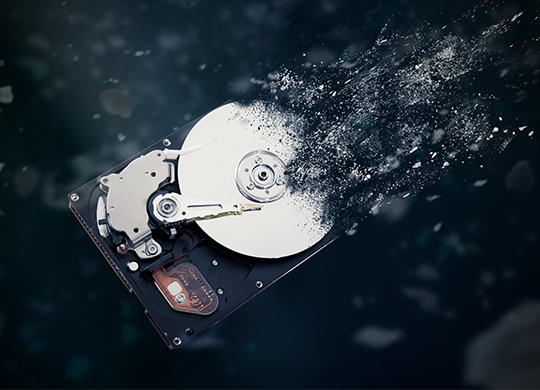The Do’s and Don’ts of Data Destruction
 How to keep your data safe and stay compliant
How to keep your data safe and stay compliant
When your technology equipment reaches the end of its road, you may be looking forward to what lies ahead. But first, you must properly deal with the old assets being decommissioned. Particularly important for those working in regulated industries such as healthcare, legal, or education, data destruction on end of life technology assets is a serious matter with specific legal requirements.
While IT managers are typically attuned with the specific requirements, they may not have the facilities, equipment or manpower to accomplish the necessary destruction of data, and may require external help. When you find yourself in this situation, following best practices and asking the right questions can make the process smooth and successful. Be sure to consider the following five factors:
1.) Data Destruction Methods
There are two primary ways data can be destroyed. It can be erased (or wiped) through Department of Defense (DoD) erasure or the drives can physically be destroyed. If data is erased, be sure to understand what level of destruction is achieved as drives can be wiped to varying degrees. Know your data destruction requirements ahead of time to ensure that your business is meeting the proper conditions for your industry.
2.) Asset Monetization
Often times if your equipment is being decommissioned, there may be life left in the technology that could be used by others. Find out if you have the option of monetizing these assets. If so, you could recoup some funds to invest in future technology while enabling others to benefit from your refurbished equipment.
3.) Compliance
It goes without saying that it is essential to understand your specific regulatory compliance obligations before beginning your data destruction project. But it is also important to make sure you know of any and all requirements and policies put forth by your company that may be separate or in addition to the federal compliance mandates.
4.) Authentication and Reporting
In order to confirm and validate the proper data destruction, you will need to produce an asset report that includes a certificate of destruction. Providers such as 2NDGEAR track detailed information including the serial numbers and/or asset trackers in a report that verifies the data destruction. Keep the reports on file and available for any regulatory compliance needs.
5.) Eco-friendly Equipment Recycling
Recycling used equipment is a good way to help keep hardware out of the landfill and provide benefit to others at the same time. Eco-friendly recycling can mean different things to different providers so be sure to ask about specific recycling practices.
Need help with data destruction? Contact 2NDGEAR at info@2NDGEAR.com or visit our data destruction page for more information. We are certified in data destruction, both on and off-site, including data sanitization and data wiping, ensuring the destruction of sensitive data and hardware as necessary.
For needs beyond IT services, be sure to check out our online store for desktops and monitors, laptops, servers, networking gear, and more!


